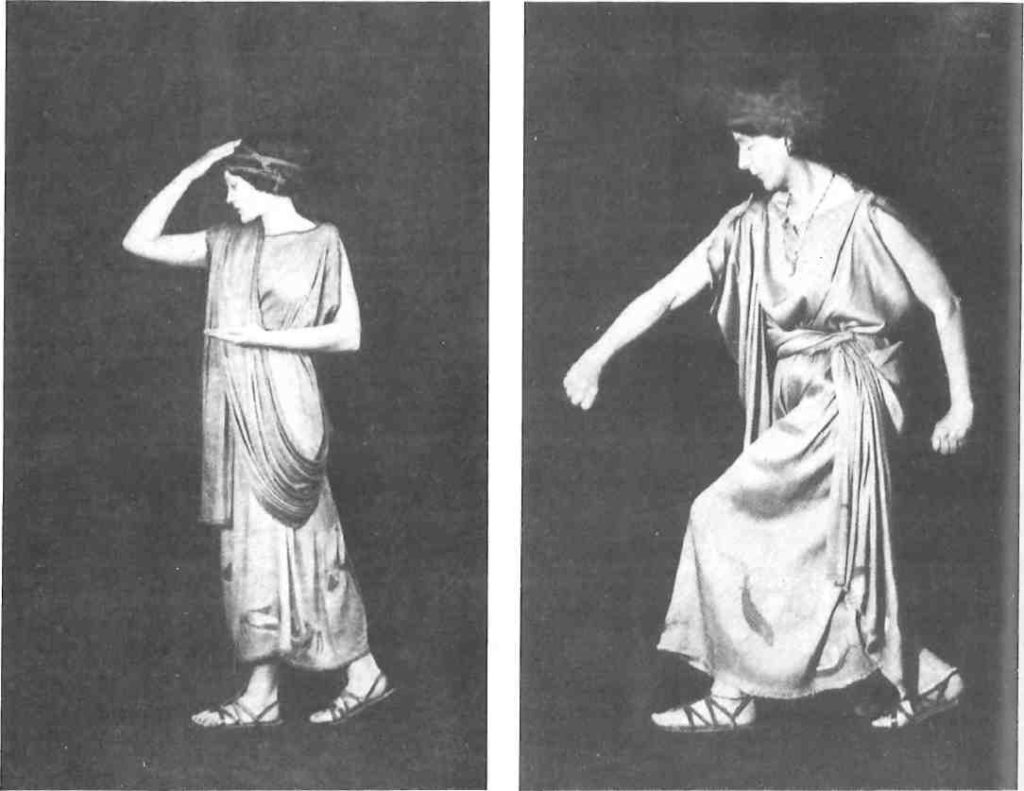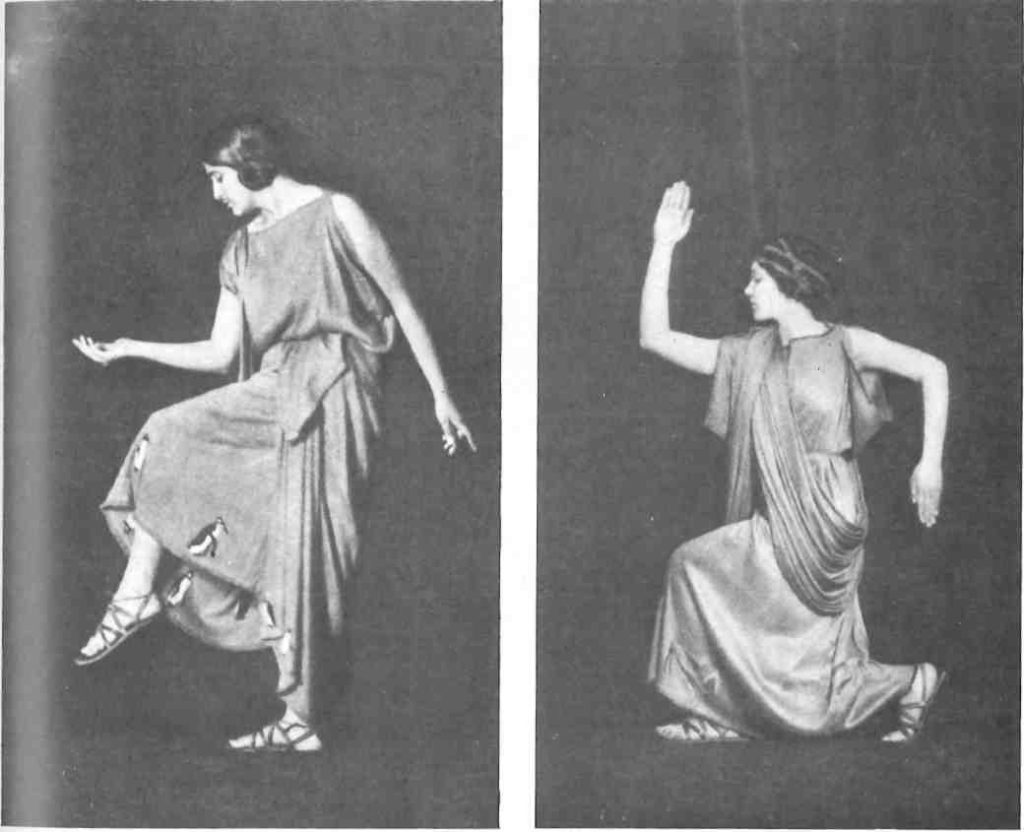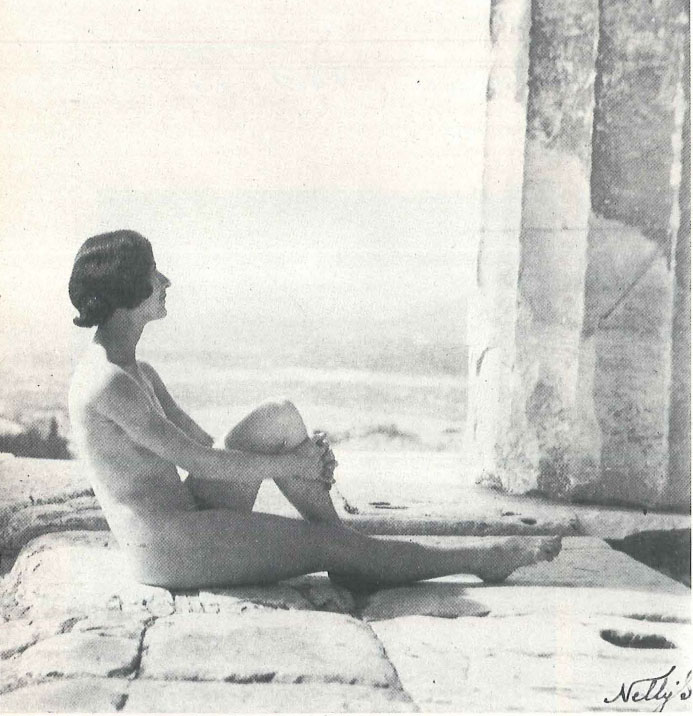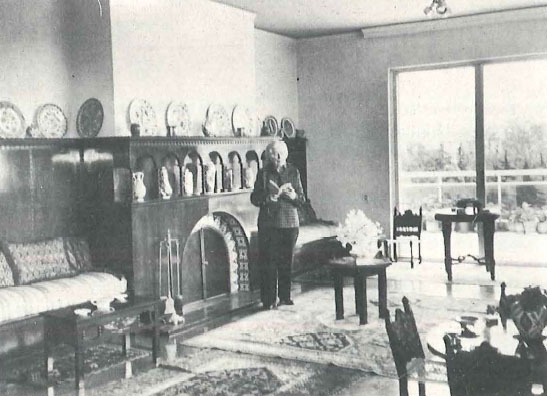The “Odyssey of an Artist” perfectly suited Ellie Soyoultzoglou-Seraidari, subject of an article which appeared in a Greek-American magazine in Chicago in 1967. Her life indeed has been an’ odyssey through fame and misfortune, hard work and perseverance. It was this article by her friend, the creative photographer and journalist Stefanos Zotos, which motivated her to write an autobiography, which was completed in 1989.

Nelly, or ‘Nelly’s’ (she is professionally known by this unusual use of the possessive), is a handsome woman still active today at 92. She was born in Aidini, Asia Minor, the eldest daughter of a prominent Greek merchant. The odyssey of her travels began early in life when her home town was destroyed after World War I. The family moved to Smyrna and soon after to Athens, just in time to escape the city’s tragic destruction in 1922.

In 1920 Nelly went to Dresden to study painting and music. Instead she discovered the art of photography. While completing her studies with two of the leading photographers of the period, Nelly met her future husband, Anghelos Seraidaris, a talented young pianist, and scion of an eminent Greek family settled in Germany. The two were married in 1929, four years after Nelly’s return to Athens. She had already set up her first studio on Ermou Street, and he gave up his career to help and manage hers.
Loving her art as she did, Nelly plunged into it whole-heartedly, and during these years before the outbreak of World War II she produced some of her best work. A creative and innovative artist, she was the first to introduce outdoor photography, resulting in a valuable documentation of sites and events. She became the exclusive photographer of the Delphic Festivals organized by Anghelos Sikelianos and his American wife, Eva Palmer, in 1927 and 1929, as well as the official photographer for the Greek Ministry of Tourism.
Nelly traveled throughout Greece searching for unusual and original subjects. The camera was her brush, the film her canvas, as she registered with a painter’s eye and sensitivity the beautiful landscape; scenes of rural women working the fields, baking, weaving, lighting the church kandili; shepherds milking their goats, making cheese. She contributed to the unbroken tradition of Hellenism by discovering similarities between the modern and the ancient Greeks in activities as well as in their appearances. This series of comparative photographs was a great success and was displayed later in Life.

The impetus behind this project sprang to life when Nelly spotted during one of her walks an elderly, handsome tseliga tending his sheep. She thought him as beautiful as an ancient god and asked to photograph him. He refused with the excuse that he was tired and dusty, but promised to return another time. He turned up a week later, neatly dressed, his newly-washed hair crowning his handsome head like that of an ancient statue. Months later she received a visitor who identified himself as the tseliga’s son. He had come to thank her for the precious photographs she had sent, for his father’s image would always be with them.
Nelly was as daring as she was innovative. Her photographs of nudes, particularly on the sacred precincts of” the Acropolis, seemed to verge on profanity in the late 1920s. Her celebrated prints of Mona Paiva, prima ballerina of the Opera Comique of Paris, showing her gracefully moving between the marble columns of the Parthenon, caused controversy and scandal. After the furor had died down, her reputation as a bold and creative artist was accepted.
The beauty of the nude photographs was enhanced by the new technique of colored Bromoil which she had introduced. It was a method that went beyond the retouching stage, enabling the photographer, with brush and palette, to rework his photographs into original artwork. The dreamy quality and the sepia tint gave them the look of a fine drawing.

The 1939 New York World’s Fair brought Nelly and her husband to the United States. The Ministry of Tourism had charged them with the task of decorating the Greek Pavilion. Since World War II broke out in the meantime, they were unable to return home. They had come for only 23 days and stayed 27 years!

Their sojourn in America was not an easy one, especially in the beginning when, as tourists, they were not allowed to work. With great effort and financial help from friends amongst the Greek-American community, they were able at last to set up a studio on the ground floor of a building on East 57 Street. With the studio decorated with her photographs and ceramic work, Nelly was ‘in business’ again, starting over in her beloved profession. She gave lectures and was invited by many museums to exhibit her photographs. Since her imagery was almost entirely of Greece, the prints were excellent propaganda, especially when featured in Georg Jensen’s windows on Fifth Avenue and on the cover of Life.
During this period Nelly had many commissions and some were lucrative. Because of the great size, some of her photographs caught attention as murals. Among her admirers were Eleanor Roosevelt, leaders of the international music world, such as Fritz Kreisler, Bruno Walter, and Dimitris Mitropoulos, and famous singers and actors. Starting as clients, many ended up as friends.
The nearly half century Odyssey’ came to an end in 1966 when Nelly and her husband returned to Greece and settled in the Athenian municipality of Nea Smyrni. They now live in a penthouse apartment with a beautiful view of the Acropolis, surrounded by their photographs, mementos and loving memories.
In 1985 Nelly donated all her films, photographs and camera equipment to the Benaki Museum. Two years later she was awarded a medal by the Ministry of Culture for her ‘pioneering work’ in photography. The Hellenic-American Union organized an exhibition of her work in 1988, introducing at the same time an elegant volume of her photographs published by the Agricultural Bank of Greece.
Nelly’s photographs can be seen this month at the gallery AD, Lykavittou 39-41, Kolonaki.







